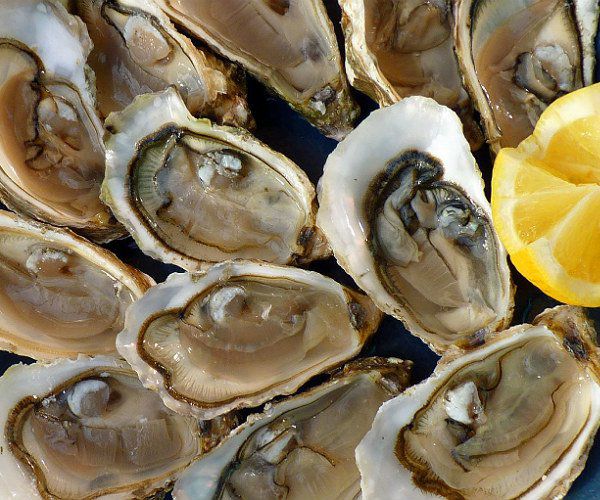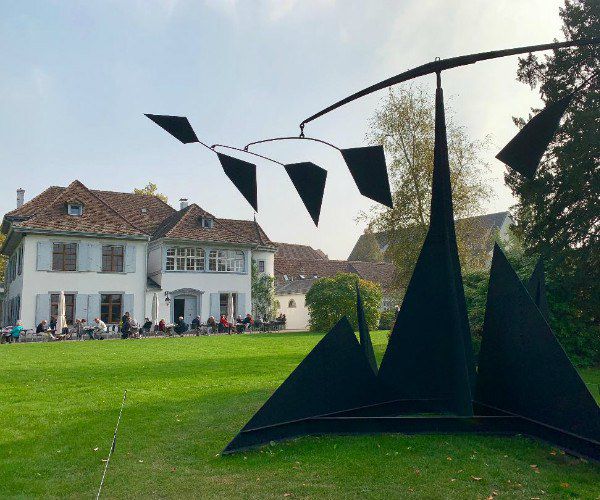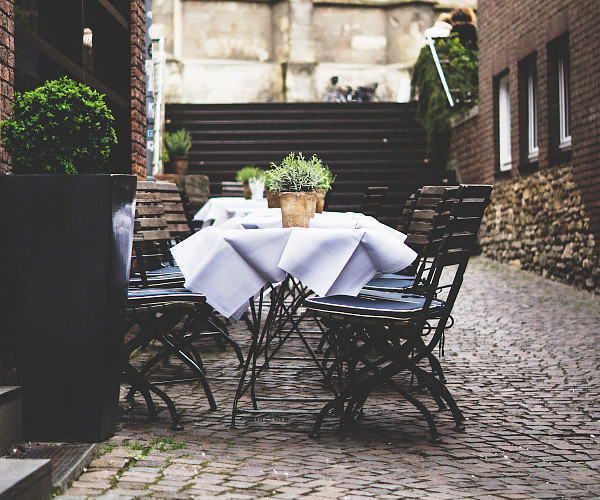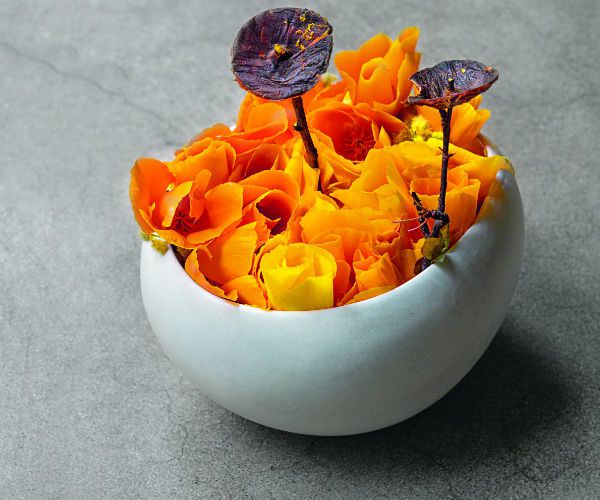Why visit Lake Charles in Louisiana?

Lake Charles, Louisiana sits on the confluence of the Gulf of Mexico, the lake of the same name, culture, unique cuisine, and attractions. This is Cajun country, full of historical French-inspired influence that extends from lodging to attractions to cuisine. The area is known for incredible fishing and hunting, yet the other aspects of Lake Charles make it must stop if you want a unique cultural experience different from New Orleans.
Blue Dog: artful cuisine
If you want Cajun-inspired upscale cuisine with a bit of history, look for the Blue Dog Café. Started by George Rodrigue, who painted Louisiana swamps, good old Cajuns and folklore legends of the Acadiana area. One Cajun story was about a supernatural werewolf dog haunting the marshes, and hence the Blue Dog series was born. Great modern Cajun food in a lively atmosphere, and everywhere you sit you are under the spell of the Blue Dog.
L’auberge Resort and Casino
You will have to stay somewhere, and the L’Auberge Resort and Casino is the ideal stopping spot both in location and amenities. A 70,000 square foot casino enables your gambling hunches to play out combined with elegant suites. On property, dining is way above average at this AAA Four Diamond resort with the Ember Grille for the ultimate wine pairing, and the Jack Daniel’s Bar & Grill where hard spirits meet their food match, especially in the oyster realm.

Darrell’s Famous Po’boys
This is the sandwich that made the gulf area famous, and the best place for a po’boy’ is simply Darrell’s. This is a down-home restaurant where locals flock, and when in doubt, go where they go. Think of this as the Louisiana version of the submarine sandwich – lots of meat including shrimp or crawfish and then dressings of choice on a New Orleans baguette-like bread.

Bayou Rum Company
Sugar cane grows aplenty in this area of Louisiana, and what better use for sugar cane then rum. They have been crafting rum for years, so expect a variety of flavors and potency levels that would make a pirate beard go straight. Their Bayou Select Rum is aged in bourbon barrels for up to three years using the Solera aging method.

Lake Charles golf
Given that you are in a delta region, the ground is incredibly fertile which means grass and course foliage is exceptionally lush. Stay anywhere in the middle of town, and these courses are a maximum of 15 minutes drive. The Contraband Bayou Golf Club, designed by world-renowned golf architect, Tom Fazio, complements the lowland marsh features of the natural Louisiana environment to enhance a different 7,077 yard, par-71 championship golf course. Gray Plantation is a beautifully landscaped, semi-private golf course that is part of the prestigious Audubon Golf Trail. If you want water, then the National Golf Club of Louisiana is set in a mature growth pine forest, featuring an abundance of water hazards on almost every hole, preserved wetlands, and roughly 90 bunkers. The Country Club at the Golden Nugget is right on the bayou, with the course featuring Miniverde greens and Celebration tees, fairways and roughs.

Birds and gators
Most people feel the best way to see an alligator is from a distance where you won’t be lunch. There are eco-tours in a variety of formats so you can view the fantastic birds, gators, and wildlife without fearing for yours. Kayak through a bayou with Lake Area Adventure Tours, or relax with a marsh boat ride with Grosse Savanne Eco-Tours. If driving an exploring here and there is more your style, the Creole Nature Trail All-American Road provides viewing to over 400 species of birds, fishing and crabbing.

Seafood Palace
The one place that serves all the local seafood is Seafood Palace, a down-home, casual eatery that is big on portions of what is in season. Step in, and you can tell this the right place as you are greeted by the owner, then go the gourmet gamut with hush puppies all the way to the famous whole crabs. And yes, a wide selection of appropriate sudsy items to wash it down.

By Neil Wolkodoff
A culinary adventure in Croatia on a luxury yacht charter

Wine, oysters, truffles, Dalmatian peka bell cookery, and even song. A luxury yacht charter along the Dalmatian Coast of Croatia is a combination of this and so much more, including Klapa singing, all of which is the real Croatian experience when cruising through these beautiful blue green waters. It is along the coast and on the various islands, that a luxury yacht charter culinary adventure in Croatia can truly be found.
Wines
The Dalmatian Coast and Islands are home to many award winning boutique wineries as the soil, sun and climate produce spectacular wine grapes. These wine grapes are considered so special that several locations on the Peljasac Peninsula just north of Dubrovnik, where Plavac Mali grape vines are grown, have their own appellations-Dingač and Postup.
When cruising along the Peljasac Peninsula, several wineries can easily be visited (with advance reservations) for wine tastings such as Korta Katarina Winery, and Grgic Winery by just anchoring in front of the wineries. To visit Korta Katarina Winery, your charter yacht can anchor in front of the winery. Guests arrive ashore via the ship’s tender for a short walk up the hill to the winery. Anchor in front of Grgic Winery in Trstrenik Bay, a beautiful bay on the Peljasac Peninsula. Head ashore in the ship’s tender and enjoy a wine tasting on the terrace under the warm sun with your yacht anchored in front of you in sparkling clear water.
Oysters
The Dalmatian coast has a centuries old tradition of mariculture. The top spot in Croatia for mariculture of oysters and mussels is considered to be Ston and Mali Ston Bays. In both bays, submarine fresh water springs bubble to the surface of the sea beds, which creates brackish water in both bays with a special combination of minerals, nutrient salts and a large quantity of phytoplankton.

It is this special combination of brackish waters, minerals, nutrient salts and phytoplankton that is felt to produce some of the tastiest oysters in the world. In London at the 1936 World Exposition, oysters from Mali Ston received both the Grand Prix and the Gold Medal Ston and Mari Ston Bays are not newly discovered mariculture locations. Oyster cultivation has been occurring in both bays since ancient times as evidenced by remnants found of Roman oyster farms. While oysters have been farmed here through the centuries, it was not until the beginning of the 19th century, that oysters and mussels were farmed and shipped as a food product for non-local consumption. Wars decimated the oyster farming industry including the recent Croatian War of Independence ending in 1995. However, since the end of the recent war, oyster farming has renewed with a flourish in these same waters in both bays that are crystal clear and sparkling clean.
When on your yacht, stop by ship’s tender at a farm raft floating on the water, and ask to buy freshly collected oysters to have raw on board, or cooked in many different ways by your onboard Chef. Or dine at Bota Sare in Mali Ston on oysters and mussels harvested fresh from their own shell farm along with vegetables from their own garden. This is a real sea to table restaurant dining experience where very fresh oysters are served raw and cooked in many ways including grilled on a wood burning fire, creating oysters with a flavor that is out of this world
Truffles
Both black and white truffles can be found in Istria, in northern Croatia. The woods in this area have the perfect combination of soil and moisture in which truffles thrive. Truffle hunting is done with trained dogs in the Motovun Forest in Croatia which is dense with oak trees and where both white and black premium grade truffles can grow to the size of your fist.

Croatian truffles have not yet captured international notice and so the prices of these underground jewels are still quite reasonable. While a charter in Dalmatia will not bring you near the truffle hunting grounds of Motovun Forest, requesting dishes made by your private on board chef from provisioned Croatia truffles will not cause your charter expense deposit to sky rocket. For the truffle aficionado, having truffle this and truffle that while on board will not break the bank. Before or after the charter one can always travel to Istria, Croatia for the complete truffle experience including hunting truffles yourself with a trusty truffle hunting dog.
Peka bell
A traditional Dalmatian cooking technique, a peka bell is a large dome shaped cast iron lid that covers and bakes food for a period of time.

The peka bell is suspended over a platform, once made of stone, where a wood fire is lit early in the day and allowed to die to embers and ash. The embers and ash are swept to the side, and a combination of meats or seafood, with vegetables and wild herbs are placed in a ring on the hot stone. The peka bell is lowered over the food and sealed with the hot ash and embers and allowed to bake for a considerable time if lamb, less time if octopus. Once done the peka bell is “cracked” by raising the bell which breaks the seal created by the ash and embers. Cracking the peka bell is not to be missed, for as the peka bell rises, your nose is met by fabulous aromas of beautifully slow roasted food, laced with fresh wild herbs.
There are a number of restaurants in Dalmatia that serve peka bell foods, however, a special location where peka bell cookery is combined with a Farm to Table experience, is Gulin Farm in Vela Luka on Korcula Island (reservations required). From the anchorage in Vela Luka, it is a good walk, for those who want to work up an appetite, or van ride to the farm. At Gulin Farm, the wood fire is started early in the day to create the peka bell ash, embers and resulting hot stone. Peka bell foods are set on the hot stone surface, covered by the peka bell, and then sealed with the ash and embers. The food roasted in the peka bell is grown and raised on the farm, and when cooking they use their own olive oil pressed from their olives, and herbs picked wild from their fields. Fresh fish, if requested, is caught that morning from the sea edging their coastal farmland, and grilled over a wood fire.
Klapa singing
Entered on the list of UNESCO Intangible Cultural Heritage of Humanity, Klapa singing is an age old form of acapella singing with religious origins, that was traditionally only men singing, but today can be women as well. Klapa literally means “group of friends”.

A Klapa group consists of a first tenor, a second tenor, a baritone, and a bass. While there can be any number of second tenor, baritone, and bass singers in a group, there is usually only one first tenor. For centuries, boys, (and now girls) if found to have a singing voice, whether tenor, baritone or bass were home schooled their part for their voice range of various Croatian traditional folk songs, so that at any time, an impromptu group could gather and break out into acapella song, with each singing their part, even though they might be strangers. However, normally it is a group of friends that might be out or gathered in for the night.Today, Klapa singing is a favorite pastime, and a daily aspect of every Croatian’s family life. When out at night in Croatia, you might hear a group spontaneously Klapa singing together. A Klapa group sings every morning in the main square in Old Town Trogir from 8:00 to 10:00am. Often the family at Gulin Farm will Klapa sing, perhaps with your charter captain joining in, if Croatian, as any well-schooled Croatian with a voice for song can join any group of Klapa singers at any time to sing acapella their particular part of beautiful traditional Croatian folk songs.
What ever itinerary you choose to do whether on a private gulet, motor yacht, mega yacht, sailing yacht or catamaran in southern Croatia, wine, oysters, truffles, Dalmatian peka bell cookery and Klapa singing can all be part of a luxury yacht charter culinary adventure through the islands and along the coast of ancient Dalmatia, that today is Croatia.
The best adventure travel destinations
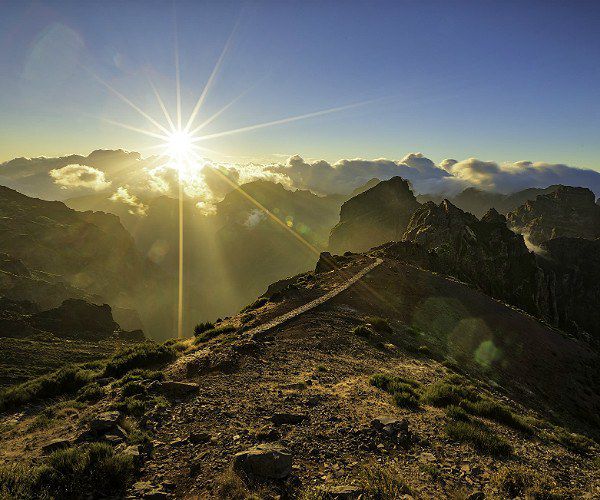
If your idea of a holiday is to scale mountain peaks rather than recline on the sun lounger, or to have adrenaline coursing through your veins as opposed to yet another poolside cocktail, then you’re in luck. The appetite for adventure travel is higher than ever. With new flight routes cropping up to emerging destinations and far-flung corners of the globe, and countries that once required a ream of paperwork now welcoming visitors by relaxing visa restrictions, it’s never been easier to get off the beaten track.
Is South African food the world’s most underrated?

The first time I booked a table with Kobus van der Merwe, he’d just been named Rising Star in the 2014 Eat Out awards, South Africa’s homegrown restaurant accolades. I invited two friends to Oep v Koep with me, both avowed foodies. The day before, Kobus warned us of the road works. Instead of the 3.5-hour round trip from Cape Town, it would take five. For lunch. I recall nervously bickering with my husband as we drove to Paternoster, the West Coast fishing village where Kobus forages and cooks – what if the forager spiel was overhyped?
Inside the $148,000 Oscars gift bag is a luxurious European cruise to decadent THC chocolates

At the 91st Academy Awards this Sunday evening, only a select few will take home the gold. But win or lose, all 25 acting and directing nominees receive a lavish gift bag from Los Angeles-based Distinctive Assets, a celebrity and product placement marketing company.
Richard Branson reveals how his new adults-only cruise line, Virgin Voyages, will turn the cruise industry upside down
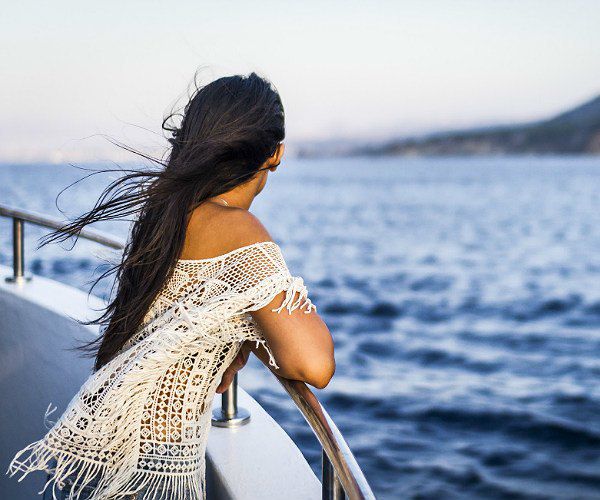
Sir Richard Branson and his Virgin Group are getting into the cruise business. The iconic entrepreneur announced last Thursday that Virgin Voyages is officially open for business with tickets for its maiden voyage in April 2020 available for purchase. Virgin Voyages, a joint venture with Bain Capital, will not only be Branson’s first foray into the cruise business, but it will also be his first experience with cruises in general. Which means, expect Virgin to break with the status quo.
Kim’s peace train offers luxury en route to summit with Trump

North Korean leader Kim Jong Un’s trip to Vietnam for a summit with U.S. President Donald Trump was shrouded in mystery until a green train with yellow horizontal stripes was spotted crossing the Yalu river into China on Saturday evening. Kim, his father and grandfather, North Korea’s three leaders in succession since World War Two, have all loved trains, but no one knew how Kim intended to make the journey to Hanoi for his second summit with Trump, on Wednesday and Thursday, until the train rumbled over the border bridge.
Fun things to do in Bangkok
Fun things to do in Bangkok
Krungthep, known to the rest of the world as Bangkok, has endured more than its share of hardships recently. The loss of the country’s beloved King Bhumibol Adulyadej, who remained remarkably popular throughout his 70-year reign, hit particularly hard last year. Thailand’s populace is nothing if not resilient, though: after a dozen coups d’état in less than a century, they have to be – and, in spite of it all, the capital continues to flourish and, in the process, reshape its identity.
For decades, this was a city that imported everything, to which strings of glitzy megamalls attests. But somewhere along the way, Thailand began to foster its own considerable creative pool. Look closely and you’ll notice that generic luxury brands are ceding shelf space to funkier fashions by Thai designers; local chefs proudly flaunt family recipes on the hottest tables in town; and even north-eastern Thai folk music is in the midst of a revival.
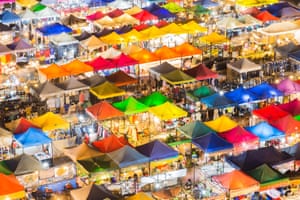
Bangkok’s historic heart may rest on temple-studded Rattanakosin Island, but its contemporary pulse is scattered throughout smaller, splintered neighbourhoods in Sukhumvit, Sathorn and Silom and can be harder to pinpoint. Travellers looking to tap into the zeitgeist should venture past the backpacker cocoon of Khao San Road and make their way towards nearby Phra Athit Road, a boho hangout with live music venues and restaurants near the Chao Phraya river, then make a beeline for Chinatown. On Soi Nana, off Charoen Krung Road, minutes from Cantonese holes-in-the-wall and stores selling traditional herbal remedies, shophouses are being refurbished into galleries and unpretentious bars.
Booming, chaotic, at times overwhelming, but never, ever boring, Bangkok is more culturally diverse, complex and compelling than ever. Here are a few things to do:
Take a cooking class
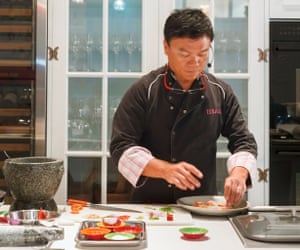
After stopping by celeb chef Ian Kittichai’s signature restaurant for updated Thai classics, such as massaman-braised lamb shanks and jasmine-infused panna cotta, you’ll want to learn how to cook like the maestro. Classes at Issaya Cooking Studio teach some of the chef’s best-loved recipes, plus insights into everything from mixology to sous-vide techniques.
• Courses from 2,000 baht (£45), issayastudio.com
Art gallery crawl
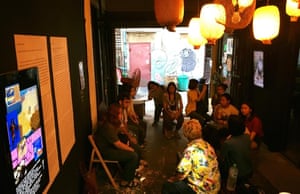
Bangkok’s art movement has blossomed in recent years. Artha Gallery keeps the emphasis on regional talent from Thailand, Myanmar and Vietnam. Over in Sathorn, head to Sathorn 11 Art Space, which features exhibitions on the ground floor and four resident artist studios above, and H Gallery, with edgy works by Asian artists in a converted mansion. Closer to the riverside, be sure to visit Bridge and The Jam Factory, housed in a sprawling multipurpose complex designed by starchitect Duangrit Bunnag.
An industrial space with eclectic collections, Speedy Grandma fills up with creative types at weekends. Treading the line between gallery and bar, Cho Why is one of several revamped shophouses injecting new energy into Chinatown. Events range from a street-art fest to a rooftop paella party. Across the street at 23 Bar and Gallery, the artsy incarnation of one of the city’s legendary dives, expect indie tunes and no-nonsense drinks.
Market hop

With more than 8,000 stalls selling everything from parakeets to pottery, Chatuchak Weekend Market, up by the Mo Chit BTS Skytrain station, remains the one to beat. Go early or late, when the tropical temperatures are more forgiving, as navigating the 27 sections can prove a dizzying experience. Plan for a post-shopping sundowner at Viva 8, a ramshackle bar with excellent mojitos where DJs spin house. Many up-and-coming Thai designers try to make it here first, so keep an eye out for next season’s labels before they hit the big time.
Head to Talad Rod Fai (Sri Nakarin Soi 51) and Talad Rod Fai 2 (Esplanade Complex) for all sorts of vintage bric-a-brac. At the Rot Boran Market (The Walk, Kaset-Nawamin road), known as the “Classic Car Market”, VW bugs and other old-school autos find new life as pop-ups selling just about everything.
Baan Silapin (The Artist’s House)
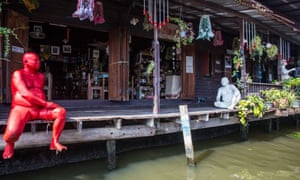
After visiting the requisite temples – Wat Saket for the view, Wat Phra Kaew for the glittering, gilded everything, and Wat Pho for a massage – and seeing all manner of standing, sitting and reclining Buddhas – head to the Thonburi side of the river for this lesser-known cultural gem: a teak house decorated with quirky sculptures. Shadow puppet performances, a traditional art that is becoming increasingly scarce, are worth seeing, but be sure to call ahead, as showtimes are irregular.
• 315 Wat Tong Salangam, Phet Kasem Road, +66 2 868 5279
Green Escape
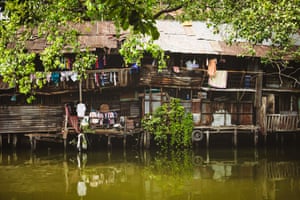
If the concrete jungle becomes a bit wearing, consider a cycling trip over to Phra Pradaeng, a mangrove-covered peninsula on the western side of the Chao Phraya.
• ABC Amazing Bangkok Cyclist offers half-day tours for £29pp, including longtail boat transfers and mountain bike rentals, realasia.net
Where to stay in Bangkok
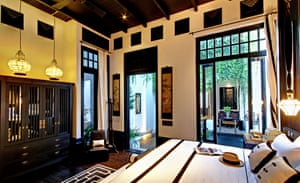
The Siam
OK, so it’s expensive, but for a luxe stay, this is the place. Six years in the making, this Bill Bensley-designed passion project of local celebrity, actor and former indie rocker Krissada Sukosol Clapp is chockablock with antiques. The resulting property is remarkably atmospheric, especially on the serene verandah overlooking the Chao Phraya. Guests can learn to fight like a champion with an Olympic Muay Thai trainer or even pick up a sacred sak yant tattoo from Ajarn Boo, a master of this ancient art.
• Doubles from £295 room only, thesiamhotel.com
Cabochon Hotel & Residence

A night at this colonial mansion might evoke memories of a stay at an eccentric uncle’s, if said uncle were the swashbuckling, well-travelled type and a bit of a hoarder. The place is crammed with curios, ranging from the intriguing (retro typewriters) to the downright kooky (cheetah skulls). It’s got character to burn, not to mention a rooftop pool, a restaurant serving Isaan and Lao cuisine, and prime location just off of Sukhumvit Road.
• Doubles from £93 B&B, cabochonhotel.com
Inn A Day

Signs of this riverside boutique’s previous existence as a coconut sugar factory are everywhere, from the original storage tins in the walls to the oversized wheels of jaggery that serve as tables in the restaurant. Each of the rooms is named and colour-coded to different times of day, starting with 7:00 AM in early-morning hues and ending with the crepuscular-tinted 5:00 PM. If the budget allows, spring for one of the “later” suites, which feature lovely views of Wat Arun (Temple of the Dawn) at sunset.
• Doubles from £80 room only, innaday.com,
Riva Arun
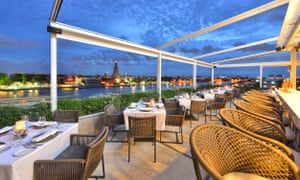
With floor-to-ceiling windows in its 25 rooms and a lively rooftop restaurant with river views, the new Riva Arun makes for a great spot to soak in the scenery.
• Doubles from £72 room only, snhotels.com
Budget bunks

Travellers needn’t spend a fortune to sleep comfortably in this town, thanks to a spate of design-forward hostels opening in trendy neighbourhoods. Decked out in warm wood tones and sporting a craft beer bar, co-working space and third-wave coffee shop, ONEDAY (dorms from £9) is as hip as they come. In Ari, a lively residential area with tons of street food, The Yard Hostel (dorms from £13), made of upcycled shipping containers, quickly established itself as a neighbourhood haunt, as well as a social stop for wayfarers. Considerate extras – bicycles for rent, two-month luggage storage, barbecue equipment for impromptu grill parties – and a friendly staff add to the experience. In Chinatown, Loftell 22 (dorms from £7) offers comfy dorms and private rooms in two previously abandoned historic buildings in Talad Noi.
Where to have great drinks in Bangkok

Iron Balls Distillery
Ash Sutton, the genius behind bars including Iron Fairies and Maggie Choo’s, outdid himself with this hideaway’s stripped-down, brooding aesthetic and succinct Prohibition-era cocktail list. A gleaming copper distillery serves as the centrepiece and produces the place’s namesake elixir, a south-east Asian spin on gin, fermented with a heady mix of fresh pineapple, coconut, lemongrass, ginger and juniper.
• Park Lane, Sukhumvit 63, on Facebook
SoulBar
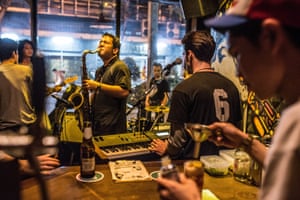
Follow the sounds of soul and funk four nights a week to one of Bangkok’s best live music spots. The lack of a cover charge and the rollicking house party vibe help explain why the crowds keep coming, even when the tiny joint is past capacity. Bigger bands often see the party spill out onto the street, which doesn’t seem to bother anybody one bit.
• 945 Charoen Krung road, on Facebook
Rabbit Hole
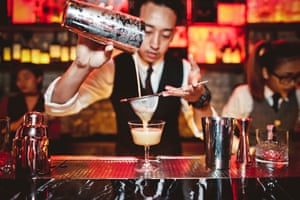
Slide open an unmarked wooden door in Thonglor and step into this dimly lit drinking den housed in a three-story shophouse. A long marble bar and gleaming, ceiling-high shelves displaying a formidable liquor collection make this one of the sexiest speakeasies in town, while the craft cocktails by legendary local mixologists Suwincha “Chacha” Singsuwan and Naphat “Yod” Natchachon mean the narrow space is packed on weekends.
• 125 Sukhumvit Soi 55, +66 98 969 1335, on Facebook
72 Courtyard
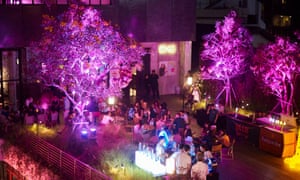
Drop whatever preconceptions the term “lifestyle mall” calls to mind, because this industrial complex buried in Thonglor houses some of Bangkok’s best bars and eateries. A crawl should start with a craft brew and greasy grub like laab fries at Beer Belly, then go for something stiffer at Evil Man Blues, a lounge with tipples such at salad days, a riff on a negroni infused with sous-vide cherry tomatoes, and live jazz Wednesday through Saturday. Touché Hombre has the best selection of mezcals and tequilas in the city, not to mention authentic bites like elotes callejeros (grilled corn with cotija cheese, chipotle-spiked mayonnaise and lime). Finish your night with a trip to Beam, a warehouse-style club where techno pounds till late.
• 72 Soi Sukhumvit 55, on Facebook
Teens of Thailand
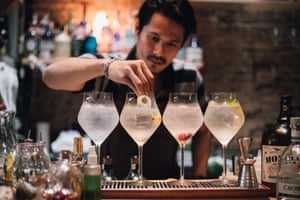
A G&T here might well carry a lingering, savoury aroma of peppered pork jerky or Thai tea. Housed in an 80-year-old shophouse, cluttered with vintage Thai furniture, this watering hole has earned a cult following for its gin infusions made from whatever the owners find from neighbouring Chinatown stores. On a weekend, be prepared to queue for one of the coveted 16 seats.
• 76 Soi Nana, Charoen Krung road, on Facebook
Sing Sing Theater

An opium-den fever dream of paper lanterns, Chinese dragons and slinky qipao-clad ladies, Sing Sing Theater’s retro-glam, over-the-top vision of 1930s Shanghai packs the dance floor on weekends.
• Sukhumvit Soi 45, on Facebook
Great street food in Bangkok
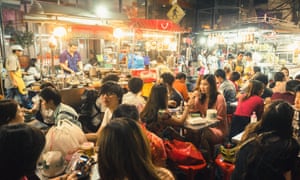
Thailand began to foster its local chefs proudly flaunt family recipes on the hottest tables in town. Salty, sweet and screaming hot, Bangkok’s street food is adored by all strata of society. Hygiene is sometimes questionable and MSG rampant, but that shouldn’t stop anyone from dining like a king on a shoestring budget.
Keep your eyes peeled for rib-sticking jook (rice porridge with pork crackling and raw egg), comforting khao mun gai (chicken and rice) or its rarer, biryani-inspired cousin khao mok gai, crispy hoi tod (eggy mussel or oyster pancakes), fatty khao kha moo (meltingly tender braised pork leg with gravy), Isaan-style jim jum (hot pot), and the ubiquitous trio of gai yaang, som tom and khao niew (grilled chicken with spicy papaya salad and sticky rice). Noodles, including yen ta fo (neon-red glass noodles with tofu), ban mee (thin egg noodles often served with wontons), suki (bean thread noodles, egg, cabbage and seafood or meat) and richly flavoured kuai tiao ruea (“boat noodles” in a spiced, blood-enriched broth with offal), are served around the clock and can be ordered haeng (“dry” or stir-fried) or nam (“wet” with soup broth). For sugar fiends, khao niew mamuang (mango sticky rice) is a dependable go-to, but consider branching out to khanom krok (custardy coconut confections) and the dangerously craveable kluay kaek (deep-fried bananas in a coconut batter).
Gentrification has edged out many of Sukhumvit’s street eats, which means travelling a bit further to find larger pockets. Victory Monument and the surrounding area has an abundance, as do Silom and the historic areas of the city. Chinatown, especially Yaowarat and Charoen Krung roads, is packed with stalls that have been serving the same dishes for generations.
80/20
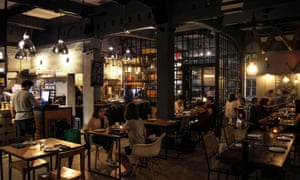
It might have started out as an artisanal pickle cannery in a hostel, but this eatery is currently whipping up some of the most interesting fare in town. As the name references, 80% of ingredients are local, while the remaining 20% allow for creative wiggle room. Chef Napol Jantraget delights in genre-bending plates like charcoal-grilled squid with fingeroot glaze, black garlic paste, popped rice berries, roasted peanuts and local sour greens that are rooted in Thai traditions, but also draw on his time at a brasserie in Toronto.
• 1052-1054 Charoen Krung Road, +66 2 639 1135, on Facebook
Err
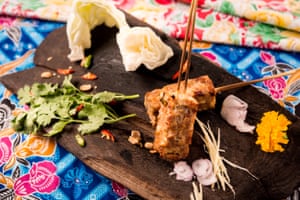
Duangporn “Bo” Songvisava and Dylan Jones, a Thai-Australian chef duo who cut their teeth at London’s Nahm, are best-known for their uncompromising Thai fine-dining eatery Bo.lan. The pair’s second offering ditches the fancier trappings in favour of gutsy countryside bites, best washed down with a Chang beer or a whisky-soda. Order a couple of rounds and nibble on sai ouwa (coconut-smoked northern sausage, £4) and kor moo yang (grilled pork neck with tamarind sauce, £5), while deciding which mains to share.
• 394/35 Maharaj Road,+66 2 622 2291, errbkk.com
Supanniga Eating Room
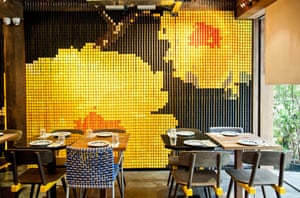
Rare Khon Kaen and Trat recipes from the owner’s grandmother help explain this cosy place’s enduring popularity. It’s hard to order wrong, but steer away from the usual pad thai and opt for khai jiew pu (omelette stuffed with crabmeat, £3) or ka lum tod nam pla (stir-fried Chinese cabbage, £2), an umami bomb anointed with pungent fermented fish sauce.
• 160/11 Soi 55 Sukhumvit road, +66 2 714 7508, supannigaeatingroom.com
Charcoal

Bangkok’s sizable Indian diaspora has given rise to some excellent eateries, including this number, which steers clear of cliched curries and peppers in subtler nods to the subcontinent, such as the decorative latticework derived from mosques and cheeky broken-English signs in the bathroom. Order the gently spiced lamb sheekh kebab (£9) or the house-made paneer tikka (£8), which is as silky as cheesecake and just as rich. After dinner, walk down the street to a darkened alley where, behind a door by an abandoned phone booth, salsa dancers shimmy to live bands at Havana Social, the owner’s hidden Cuban-inspired speakeasy.
• 38/8 Soi 11 Sukhumvit Road, Fraser Suites Hotel, +66 89 307 1111,charcoalbkk.com
Why Basel should be on your radar?

When travelers think of Switzerland, the gorgeous scenery and skiing are often top of mind. But what else is there to do? Consider Basel! June is the month for Art Basel, and are great reasons you should visit Basel during your next visit to Western Europe.
The museums… obviously!
Basel has a whopping number of museums (almost 40!) in this small, beautiful city. The museums range from those displaying classical pieces to some with contemporary art from around the globe to others with eclectic, niche works (imagine risqué comics). The most notable, not-to-be-missed museums are the Kunstmuseum and Fondation Beyeler. Additionally, every hotel provides each guest with a Basel Card upon check-in – these essential cards give you 50% off of all museums visits, complimentary public transportation, and more … making a visit to Basel even more enticing.
The food scene
I was pleasantly surprised by the food scene in Basel. There are a few exceptionally delicious Michelin-starred restaurants including the phenomenal Restaurant Stucki (Tanja Grandits) and Cheval Blanc (in Grand Hotel Les Trois Rois). For your impromptu meals in between museums, there are many adorable cafes offering quaint atmospheres, funky vibes, and great food options for a light lunch.

The landscape and architecture
With the Rhine River running right through the middle of Basel, you’ll find lovely views in many parts of town. When you’re not by the river, you still get to absorb beautiful architecture throughout the city.

The ease
Basel’s proximity to Zurich makes this such an easy addition to not only a Switzerland trip, but also an addition to many Western Europe itineraries. It’s super easy to visit Basel. After landing in Zurich, take a quick, 1.5-hour journey via train to Basel. If you plan to take the train to a few places in Europe, be sure to get a Rail Europe pass to have just about all of your train journeys covered in one, flat price … even your First Class journeys. Even if you are flying from the US, with that short train ride you’ll make it to Basel in time to catch evening views along the Rhine and dinner in one of those fabulous, Michelin-starred restaurants.

The people
From the kind woman I randomly asked for assistance with identifying the correct train to the in-the-know hotel staff willing to give me the skinny on the funkiest, non-touristy neighborhoods to the young skateboarders who allowed me to take photos of them during their practice to the local art enthusiast who struck up a conversation with me in a museum to hear a different perspective on an exhibition about Black American culture … the people of Basel are so kind, welcoming, intellectually curious, and keen on having interesting experiences (including with visitors).

Be sure to build this fantastic spot into your next trip to Western Europe.
By Tisha Neufville from neufvilletravel.com
Where to spend Easter in Provence

Easter… the word conjures up Spring sunshine, cute rabbits, fluffy chicks and chocolate. However, in the USA or UK, the reality can also be the nightmare of a long school holiday break with torrential rain outside. So, give yourselves a treat and head south. Blue skies, balmy air, open spaces and even beaches await you in Provence, plus the temptation of local wines and chocolate to die for! With the hard to beat mix of the city of Marseille, with countryside and coast all within easy reach, Provence is definitely a destination with something for all the family!
Getting there
With scheduled and budget airlines flying into Marseille, arriving quickly won’t be a problem. If you prefer to drive, then make a holiday of the journey and stop a night or two en-route and enjoy seeing the changes to the French countryside as you go. Although tolls are charged on many of the main motorway routes, it is often worth the cost to avoid city centre traffic and reduce your travel time. Plus, the motorway network in France is second to none.

When you arrive in Provence, you will be spoilt for choice in accommodation either with something for every budget or family size. Consider renting a village house to really get the feel of French life or opt for staying at a Chambre d’hotes. Such accommodation can vary from very simple to very elegant, depending on your budget, but these “home from home” stays will also often serve wonderful evening meals which will give you a real taste of local cuisine. There are also, of course, a wide range of hotels in locations from country to coast.
The Easter weekend
Easter is very much a family time in France when all generations will gather together. Unlike the UK, the only public holiday is on the Monday and life continues as usual on the Friday before the Easter weekend. As a predominantly Catholic country, you will see whole families heading to church on Easter Sunday and they will follow this outing with a traditional Easter Sunday lunch of roast lamb. Easter egg hunts will abound over the weekend, so look out for these events near to where you are staying.
Chocolate
Traditions stand firm in France as amply demonstrated in the wonders of the chocolate confections conjured up in the windows of the local “Chocolatiers”. Here you will find the most glorious confections of chocolate with the Easter eggs, still traditionally decorated with sugar flowers, swirls and bows. No girl could possibly resist (regardless of age!).
Chocolate bells are also big on the chocolate agenda in France so no excuse for the boys to not be able to indulge. You will also find that many Chocolatiers will serve gourmet coffee and hot chocolate to tempt you for a mid-morning break. You then just have to work out how to burn off all those calories!
How to pass your time
The great outdoors awaits in Provence and, in April, the weather should be kind enough to allow you to suck in lungfuls of healthy, unpolluted fresh-air. Head into the countryside to stone hilltop villages like Le Castellet. Admire the tiny streets of these ancient villages, bask in the views and enjoy the Spring flowers growing wild.

Down near the sea, enjoy the timeless beauty of the Parc Nationale de Calanques which hugs the coast east of Marseille and stops just before you reach the pretty seaside fishing village of Cassis. Glorious views all the way and absolutely no excuse for the kids not to burn off excess energy!
If you and the younger generation are game, the sunshine might even tempt you to a paddle on one of the many beaches along this southern coast. If the Mediterranean is still a bit on the chilly side, warm up with a game of Frisbee on the beach afterwards.

If you head into Bandol a little further east, the kids will have a choice of three beaches, while the wine drinkers in the family can choose from a wide variety of bars and restaurants where they can sample offerings from the local vineyards.

Exercise can also be found in eclectic Marseille with its old town back-streets and markets offering lots of retail temptation. Indeed, April is the perfect time to really explore the city before the heat of summer makes street-exploration more arduous. There are art-galleries, museums and the always vibrant seafront gives views out to Chateau d’If just offshore… another great trip for the kids with the temptation of not only a boat ride, but the chance to view dungeons in the castle on arrival.

Marseille although known for its vibrant city life and seafront, also offers some beautiful parks – the huge Parc Borely with its fabulous chateau and fountain, also has a play area and a separate Jardin Botanique with a collection of rare plants. In the Parc du 26eme Centinaire you will find 4 different themed gardens but also a skate park and bike paths. If you are getting footsore, you can rent a bike here to explore. Parc Longchamp has it all; a chateau, pavilions and museums plus parks, ponds and fun animal statuary. Jardin du Pharo, although smaller, has the beautiful Palais du Pharo to admire and also offers the chance to see Marseille from a different angle, taking in views of the old port and many of the city’s monuments.
When you’ve burnt off that excess energy (and the chocolate!) as with any big city, there are a host of bars and restaurants to tempt you. A little trip to Provence also has the added benefit of offering 24/7 French classes prior to the Summer term exams. Nothing can beat the benefit of hearing the language all around you and there’s no excuse not try out those phrases learnt in school.
Whatever you end up doing this Easter, I hope you have a wonderful time! Please let me know if you have any questions about Provence, particularly around the Bandol area, I’m happy to help.
Discovering the Amazon in Peru

Our world tour of 15 countries in 10 months included 52 flights one of which was from Cusco to Puerto Maldonado to be met by our driver and transferred to the banks of the golden brown Madre de Dios River. We boarded a long-tailed boat for a 45 minute journey deep into the rainforest to arrive at an eco-luxury lodge on the river with 35 wooden cabanas inspired by the Ese’Eja culture.

Our first trek on foot ended on the bank of a secluded creek where a strategically placed wooden kayak had been left, large enough for our party of five plus the guide so we spent a glorious half an hour slowly manoeuvring our way down the shallow creek. With the jungle soaring above us we were accompanied by butterflies in their thousands of every conceivable colour, some landing on our boat and some on us for a free ride downstream, scarcely a word was spoken.
We entered a small lagoon and met the most bizarre creature; think highly colourful exotic flying turkey with poorly applied blue eyeshadow and you’re not far off the mark. There were literally hundreds of them around the quiet lagoon providing its favourite food.
They are the Hoatzin, known as the missing link between reptiles and birds, and surely look like they’ve crossed the time line between the prehistoric era and the present day. They have multiple stomachs like a cow to process their food, make a loud grunting noise similar to a pig with a sore throat and don’t have any predators because they taste like cow dung. The locals know them as the stinky bird. Lovely things.
There was a choice between the Amazon Canopy Walk or the Anaconda Walk, unsurprisingly we opted for the former. As you may guess, it starts by going up, a long way up. Our guide led us to a rickety old tower with ragged steps, what seemed like hundreds of them, disappearing into the overhead covering. They would take us up 35 metres to look down over the summit of the jungle, we didn’t look down until we reached the platform, and what a view.

It was only when our guide started to point out the route of the canopy walk connecting nine vast Capoc trees that we noticed the foot bridges. This was not for the faint hearted.
The wooden planks less than a metre wide bounced and rebounded with every step, the netting, doing its best to create sides, was a little frayed and the balustrade ropes to hang on to were slippery and unstable. Frankly, the whole thing looked perilous and precarious but we both made it to the first huge Capoc and the next one was easier. After a few crossings between trees tops we were enjoying our jungle journey so were stopping halfway across to marvel at the views below from the Canopy.
The Canopy Walk ended at another tower with a final connecting foot bridge to the Jungle Tree House – available for a romantic dinner and night for two at 2,200 Soles about £600. We crossed the rope bridge, old hands at this now, to take a look at what a night would be like suspended 35 metres off the ground. Answer? Not for us really, far too small, a thunderbox for a loo and unsure of the room service at such a height.

As we made our way back through the jungle to the lodges we heard a thrashing in the treetops, a troupe of squirrel monkeys was crossing our path directly above us. Small, chestnut brown and incredibly agile these travelling troupes usually number a hundred or more, probably half of them came down from the canopy for a meet-and-greet with us.

They made no audible noise themselves, there was just the crash of ferns as they descended jumping from one branch to another. At one point dislodging an old wooden bough and sending it clattering to the ground landing just in front of us. But what a sight this was, literally dozens of inquisitive little monkeys completely surrounding us, the nearest just a few feet away, terrific fun and a great memory to take home with us from our days in the Amazon.
The next expedition was half an hour up the river and an hour hike to Sandoval Lake billed as the most beautiful in South America. On entering the National Park, where strangely you have your passport stamped, we were advised to keep to the centre of the track as a precaution due to Bullet Ants crossing. These king-sized ants inflict the same venom as a python so best to give them a wide berth.

Our guide stopped us in our tracks following one distant squawk enabling us to experience one of the rarest sights in the jungle. Two royal blue Macaws with bright yellow breasts flew to perch in the canopy above us. I would have known these as parrots – the Long John Silver kind – white around the black beak and about a metre in length due to its long blue tail.

At the end of the challenging hike to a remote part of the deep jungle we found the creek and kayak that would provide the entrance to the lake. The enclosed narrow creek meandered us through the tangled everglade, then with little warning we were disgorged into the vast motionless lagoon, it was breathtakingly beautiful.

We were not entirely alone on this secluded tranquil lake. From our small kayak we spotted Howler Monkeys watching us manoeuvre around the shallows, a large Paiche broke the surface to take a look and half a dozen Cormorants flew close by inches from the surface no doubt searching for a late fish supper. But the one species we wanted to see was the rare Giant Otter of which there are less than 5,000 still in existence globally and they are understandably very wary of humans.

Our luck was in though. We noticed a disturbance at one of the banks and paddled quietly closer. A family, or romp, as I was reliably informed by our guide, of six Giant Otters came out from the margins to no more than twenty metres away. They have poor eyesight, using their whiskers to sense nearby fish, so in absolute silence we watched them hunt, catch and eat large fish for perhaps an hour or so. These are not the reddish brown cat sized otters we now have inhabiting some of our UK rivers but thick set and grey up to a metre or more in length with large heads and white chests.
They swam and dived together effortlessly as if part of a synchronised swimming team and once a fish was caught in its powerful jaws it would appear to stand up in the water grasping its prey while we heard the crunching and tearing of bones and flesh, all adding to this unique spectacle.
As we sat quietly watching the exceptional scene and the sun sank providing us with an orange and pink sunset, the lake was to gift us with one more souvenir of our visit. High above us flying in formation across the lake were five red Macaws and in the trees above the feasting otters were the infants of a family of monkeys chasing each other across the canopy, we appeared to have been transported into a Disney film.

Our time in the Amazon rainforest was what global travel is all about, it was the experience of a lifetime, allowing us to get closer to the wildlife than we ever imagined and one we will never forget.
The world’s most expensive island is in Ras Al Khaimah. And it’s up for sale

The world’s most expensive island – a man-made 660-acre expanse in the Arabian Peninsula – goes up for sale in UAE. The Marjan Island Ras Al Khaimah has gone on sale for £360million, offering private beaches, five-star hotels and stunning views of the Arabian Gulf. Al Marjan Island, which has gone on the market, is a collection of four man-made expanses in the northernmost of the United Arab Emirates, Ras Al Khaimah.
This floating entertainment hub could be biggest superyacht in the world
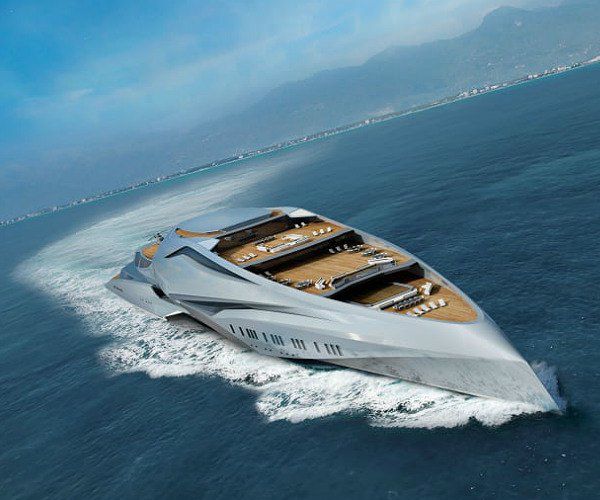
Just when you thought superyacht designs couldn’t get any more extravagant, along comes one to blow the others clean out of the water. The Valkyrie Project envisages a spectacular, sleek vessel loaded with super-cool luxurious entertainment features that — with a length of 229 meters (751 feet) — would be the world’s largest superyacht. And the best part? You won’t need to be a billionaire to get on board. Valkyrie is the work of Chulhun Park, chief designer at Latvia’s Latitude Yachts.
Hoshinoya Tokyo is Japan’s most luxurious urban ryokan

With just over a year till Tokyo hosts the 2020 Summer Olympics, now’s the time for travelers planning to take in the sporting action live to start thinking about their accommodation plans. Particularly those looking for a one-of-a-kind Japanese luxury experience. Leading the charge in this regard is Hoshinoya Tokyo, owned by hospitality brand Hoshino Resorts. It isn’t a boutique hotel. Nor is it a luxury hotel.
How a little-known California surf town hopes to win over luxury tourists

Dana Point, the starting position of California’s Pacific Coast Highway, is currently known, among outsiders, as that place just south of Laguna Beach. But Dana Pointers think their community, which they consider the surfing capital of California and the whale watching capital of the West, deserves greater accolades. For now, though, while Orange County neighbors like Newport Beach, Laguna Beach, and Laguna Niguel revel in the reputation of the California luxe life, Dana Point is largely anonymous.
On safari with the wildlife poacher turned protector

I’ve never met anyone like Barichera. A spry 61-year-old, he was waiting for me on a hilltop overlooking the savannah at Singita Grumeti, a 350,000-acre private reserve in Tanzania. Working 21-day shifts from a lookout, Barichera is part of Singita’s anti-poaching unit, responsible for ensuring that animals roaming into the reserve stay safe.
Wonderful South American foodie destinations

Though well known as an incredible cultural and adventure destination, South America’s reputation for fine cuisine is much less recognized. This is changing rapidly, though, as this southern continent emerges as one of the trendiest food regions on the planet. Today, Latin America serves up everything from velvet-soft Colombian sea bass to melt-in-your-mouth Argentine beef (paired, of course, with the finest Malbec).
All of this has been fostered by an incredible array of exotic, innovative and refined restaurants that have cropped up across the continent. Interested in checking these out, but quite sure where to start? Here’s a rundown of some of hottest Latin foodie destinations and dishes today.
Lima, Peru
Today’s culinary capital of South America, Lima Peru can boast an inspiring epicurean legacy handed down by its pre-Hispanic and colonial predecessors, while nourished by the innovative Pacific-rim influences from China and Japan.
Peruvian restaurants provide some of the most sophisticated gourmet experiences around, presenting a dazzling amalgam of flavors, spotlighted with glowing reviews in international food blogs.
With its abundance of exotic ingredients and Michelin-starred chefs, Peru’s explosive flavors are finally receiving the recognition they deserve. We suggest you experience world-class Lima restaurants such as Central, Maido or Astrid & Gaston, which have burst upon the scene with fusion delights unlike anywhere else. Where else can you sample quail eggs in hot sauce or Peking guinea pig on purple corn pancakes? In Lima, the exotic has no end.
Buenos Aires, Argentina
Though Buenos Aires is famous for the best beef in the world, when considering a foodie tour of the Argentine capital, don’t think of simply of steak; think “asado” – the medley of grilled delicacies of which sirloins are just one of the several succulent ingredients. Here, feasts of meat are served in a wide variety of preparations that include bife de chorizo (top loin steak), chorizo sausage and morcilla (blood sausage). However, while all of these are quite filling, they’re merely the prelude to costillas, a xylophone of ribs barbequed on a charcoal-fueled parrillada (grill). Experience this is one of the many parrillas (steak houses) found in every barrio, with the Palermo neighborhood being home to elegant restaurants like Don Julio, a favorite to gourmet eaters locally and from abroad. Such foreign travelers flock to Buenos Aires for bites of these mouthwatering meals paired with one of the country’s renowned Malbec wines.

While in this city, dubbed the “Paris of the South,” experience the sophisticated European flair evidenced in Buenos Aires’ delectable Latin cuisine.
Quito, Ecuador
Looking for a taste of truly traditional South American cuisine? Head to Quito, a city whose restaurant scene is hot on the heels of culinary driving forces like Lima and Buenos Aires.

Many travelers stopping in mainland Ecuador en route to its Galapagos Islands are pleasantly pleased to find the capital an epicenter of the country’s wholesome, home-cooked style of dining. Gastronomic trends here combine centuries-old indigenous traditions and the adroit artistry of innovative chefs who are building on the country’s classic cuisine. Prepared simply yet deliciously, Ecuadorian staples include beans, rice, plantains, yuca, and fresh fish. Try a zingy encebollado soup, or deep-fried corvina (sea bass) in a bowl of ceviche (raw fish), or llapingacho (a fried potato cake with peanut sauce).
While these great local dishes are called comida típica (which translates as “typical food”), you’ll pleased to find that these savory Ecuadorian dishes are anything but typical!
Cartagena, Colombia
Thanks to a vastly improved security situation, Colombia as a whole is yet another rising culinary star in South America. Within this country, not only have Bogota and Medellin stepped into the spotlight as gourmet foodie destinations… so has Cartagena.
This coastal city draws its culinary influence from the seafood and chili flavors of the Caribbean. Wandering through the cobblestone streets of Cartagena’s stunning UNESCO-declared “World Heritage” historic district, you’re sure to come across restaurants like La Cevichería, one of the continent’s finest fish restaurants. In this restaurant , like those throughout this seaside city, the menus are full and ever-changing. However, a sure bet is the catch-of-the-day ceviche, a raw fish dish made even more sabrosa when doused in coconut bits and lime.

Santiago, Chile
Surrounded by fields and orchards chockfull of all types of flavorful produce — from olives to papayas and everything in between — Santiago is the perfect destination for the true gourmand. Nonetheless, all tastes and preferences are catered for in Santiago.

From aijaco stew to beef rib empanadas and pastel de choclo (a meat pie made also with corn, eggs and olives), Santiago is a foodie hotspot …a culinary fusion of Spanish and indigenous flavors, coupled with some of the best wine in the world.

For elegant dining, inviting restaurants like Borago, Ambrosia, Terraza, and Restaurant 99 check off all the boxes. However, you shouldn’t overlook more popular venues like Mercado Central (“Central Market”), a hip, art-nouveau marketplace with tons of fresh and delicious seafood). Similarly, the stalls of the La Vega market are brimming with exotic fruits and vegetables worth sampling.
For food-minded travelers weighing South America as your next destination, simply pack your insatiable appetite and include one of these outstanding foodie destinations on your itinerary. Come and discover why everyone’s drooling over these amazing destinations.
The best restaurants in Santiago de Chile

With its lunar landscape deserts to the north and its dazzling glacial mountain ranges to the south, Chile is a fabulous place to vacation. And if you know where to go, it’s also a great place to dine.
Chilean cuisine is as diverse as its geography. Its innovatory chefs come armed with a blend of traditional and contemporary methods as well as unique, local ingredients to create flavours that just don’t exist in other parts of the world. And most of the top can be found in its capital, Santiago.
Whether you’re in town for a brief layover or staying put a little longer, here are five of the best, fine dining restaurants in Santiago to try during your visit.
Boragó
Boragó is more than a restaurant, it’s an establishment, a landmark, a symbol. Head Chef Rodolfo Guzman seeks out lesser known, rare, indigenous ingredients from the heights and depths of the country and transforms them into something truly majestic. As well as working directly with the local farms and vineyards, the restaurant even milks its own milk and harvests its own vegetables. Having won numerous awards, Boragó is a bucket list experience to savour.
Europeo
This modern Chilean restaurant showcases innovative fine dining at its friendliest. Interiors are clean and simple; it’s all about great food here. Working closely with small local farms and producers, Head Chef Francisco Mandiola insists on the highest quality, freshest ingredients to create beautiful new flavours. Creative yet accessible, elegant but not stuffy, Europeo is a Santiago favourite.

99 Restaurante
Strictly speaking 99 Restaurante is not fine dining. Nevertheless, it serves some of the finest food in town. A favourite with locals, this award-winning eatery is all about authentic, but elegant, local Chilean cuisine. Rustic wooden tables and chunky crockery set the stage for its ever-popular dishes. Service is friendly yet never overbearing, the ambiance is warm and inviting… and it’s surprisingly good value.

Restaurante 040
Sexy, fun and quite frankly a little bonkers is how many locals would describe 040. Tucked away on a downtown side street, 040 is perfect for date nights, parties and celebrations. The tasting menu is a veritable Willy Wonker tour of Chile served on everything from straw lined egg shells to miniature statues. And to keep the party alive, a hidden speakeasy up a concealed elevator serves great cocktails to the tune of funky jazz.

Osaka
As its name suggests, Osaka focuses on Nikkei cuisine, the Japanese-Peruvian fusion food now famed across much of the globe. Consistently popular with locals in Santiago, Osaka is classy and alluring, arguably serving the best (and prettiest) ceviche and sushi in town. With a capacity of up to 145 diners, it’s also a favourite with groups, offering great service and glamourous vibe.

By Nina Hobson
Superyachts for charter in the Caribbean

One basic rule in superyacht charter is that yachts move! This exciting aspect of yacht charter means that a yacht and crew that you love may be available for a yacht charter in the Caribbean one winter, and then in New England the next summer. While the winter after the same yacht might be available for charter in the Bahamas, and that next summer, available for an Italian Riviera Cruise providing fabulous yacht charter vacations on the same yacht with the crew that you love in each charter location with the bonus of an ever changing view.
The following are three luxury superyachts that are in the Caribbean this winter, 2019, each with a crew that we love. Want to have fun in the sun enjoying the balmy Trade Winds cruising through lovely tropical islands? We think each one of these three superyachts is a terrific choice for a great charter in the Caribbean this winter in their particular price and size range.
Diamond Girl
Diamond Girl is a 103 foot Johnson Motor Yacht, with 4 guest staterooms for a total of 8 guests, 4 crew including a Captain, Chef, First Mate and Stewardess; it is $47,000/week for the yacht and crew this winter in the Caribbean, plus all expenses and crew gratuity, if earned.
The design of Diamond Girl in particular provides a tremendous amount of interior room, and this is one of the few yachts in charter where all of the staterooms have double beds, with a king bed in the Master and VIP Staterooms, and queen beds in the two additional staterooms. This is the perfect yacht for four couples to share, as each couple will have a stateroom with either a king or queen bed. This summer Diamond Girl will be available for charter in Cuba, based out of Key West, and also the Florida Keys, and the Bahamas. If you miss a charter on Diamond Girl in the Caribbean this winter, don’t miss being on board for a charter in Cuba this summer; a very unique emerging yacht charter destination.
Far Niente
Far Niente is a 130 foot Westport Motor Yacht with 5 guest staterooms for a total of 10 guests, 7 crew including a Captain, Chef, Chief Mate, Chief Stewardess, Second Stewardess, Engineer, and Second Mate/Stewardess; it is $130,000/week for the yacht and crew this winter in the Caribbean normally; however for the remaining winter charter time in the Caribbean, the yacht is being offered at the great rate of $115,000/week, plus all expenses and crew gratuity, if earned.

This is the larger version of the 112’ Westport, an American quality built motor yacht for a total of 10 guests rather than 8 guests. This yacht is well equipped with water toys, including a 35’ Boston Whaler Outrage with triple 350hp Mercury engines rigged for offshore fishing/trolling and lighter poles for casting, with an on board private head and live well. In addition is a fun water slide scheduled to be on board in February. This yacht has 3 or 4 guest staterooms with a king bed, and either 1 of 2 staterooms with two twin beds, as the twin beds in one of the stateroom can convert to a king bed. This is the only Westport 130 foot super yacht that offers 4 guest staterooms with king beds if wanted. Take advantage of the special discount pricing offered just for this winter in the Caribbean. This summer Far Niente will be available for charter in the Bahamas, an outstanding cruising destination in the summer.
Bash
Bash is a 183 foot Benetti Motor Yacht with 6 guest state rooms for a total of 12 guests and 12 crew including a Captain, Chief Officer, Head Chef, Chief Engineer, 2nd Engineer, Bosun, Chief Stewardess, 2nd Stewardess, 3rd Stewardess, plus one more stewardess, and two Deck Hands; it is $290,000/week for the yacht and crew this winter in the Caribbean, plus all expenses and crew gratuity, if earned.

With a beautiful dark blue hull, BASH is a standout in any harbor, immediately noticed as a yacht of distinction. The very versatile layout offers a variety of sleeping accommodations for various groups of 12 in 6 guest staterooms, each with an ensuite bath. The main deck Master Stateroom includes a steam room in the ensuite bath, and a forward facing observation deck to privately enjoy the scenery while cruising or when in a lovely anchorage. There is a wide variety of water toys including a 36 foot towed tender and a water slide. This is a great yacht to choose for Caribbean winter water sports fun. Bash will be heading to the Western Mediterranean for charter this coming summer in France, or Italy.
Each one of these super yachts is a terrific choice for charter in your size and price range. And each yacht has a terrific crew on board that we know and love. While the yacht, including the layout is important for your on board comfort, it is the crew that create the charter experience that is over the top. Fall in love with your yacht crew and follow them around the world, which you can do, because yachts move!
By Missy Johnston from www.northropandjohnson.com
Must-stay luxury hotels in South Africa

As a travel writer based in South Africa, I have the privilege of visiting some of the country’s finest hotels and lodges. Here’s a short-list of seven of my most memorable stays from the last year, all offer uncompromising luxury, food & wine experiences, and of course set in stunning locations.
The Old Rectory, Plettenberg Bay
The Garden Route is a lush and scenic part of the coast enjoyed by many of South Africa’s foreign and local visitors. One of its newest luxury stays is the Old Rectory, in the beachside town of Plettenberg Bay. This beautifully restored heritage property has elegant charm and refined hospitality that will cater to your every need. It’s a one-minute walk to the beach – ask the staff to setup a beach picnic and enjoy views of kilometers of pristine coastline.
The Four Seasons The Westcliff Hotel, Johannesburg
The undeniably iconic Four Seasons Westcliff Hotel is a luxe lodging of note in the heart of Johannesburg. Hugging the side of one of the city’s highest ridges, the hotel offers unrivaled views over the world’s second biggest man-made forest. Serene wellness spaces, a range of eateries and world-class service make the hotel a must-visit if you’re passing through Johannesburg.

Hartford House, KZN Midlands
Nestled in the rolling hills of the Kwa-Zulu Natal Midlands, you’ll find Hartford House. This boutique hotel sits on kilometers of prized farmlands and offers what I feel is the pièce de résistance of dining experiences in the area. Dine in style and only have a couple steps to your room in the gracious country house, or a short walk to the chalets built on the lake. Come for the food and stay for the whole experience.

Holden Manz Estate, Franschhoek
If your dream is to stay in 5-star luxury, on a working winery with some of the most beautiful views offered from South Africa’s winelands, then look no further than Holden Manz. With premium wines to taste, a restaurant with killer views and a country house with only 5 luxe rooms you may just be tempted not to leave the property at all. Make sure you leave some space in your suitcase – you’ll want to take home some wine.

Queen Victoria Hotel, Cape Town
In the midst of the busyness of Cape Town’s V & A Waterfront, South Africa’s most touristed spot, hides an exclusive and utterly gorgeous 5-star hotel. The Queen Victoria Hotel has beautifully appointed rooms – although you’ll be impressed the minute you walk into the dazzling triple-volume atrium. The afternoon tea is not to be missed.

Ellerman House, Cape Town
Since the early 1900s this elegant Edwardian mansion has been proudly casting her gaze over the Atlantic Ocean. Now one of the country’s finest luxury boutique hotels, her guests can also enjoy the unbridled views. If that isn’t enough, the owner’s relentless love for the art means you’ll also be living in one of the most impressive private art collections in the country. Naturally, an incredible gourmand experience also awaits the discerning traveller.

The River Lodge Thornybush, Kruger National Park
A quintessential African safari experience, with some of the best service and hospitality you can find in the country. Wildlife abounds in this private enclave of the Kruger National Park, so get your animal checklist ready. A total of only 6 units means it’s an unrivaled intimate experience that will leave you feeling like royalty. The elephants drink almost daily from the lodge pools – one of the wildest welcomes I’ve ever had from a game lodge.

By Jared Ruttenberg, travel writer based in South Africa
Why you should cruise around Japan

From its ultra high-tech cities and world-beating food to its grand temples and bamboo forests, there really is no other country like Japan. Tuck into a steaming bowl of ramen at a station counter or watch a tea ceremony in an imperial castle, and you’ll see for yourself the wonderfully Japanese fascination with detail that has ensured that the country has one of the least diluted cultures in the world.

With over 6,800 islands in its archipelago, a cruise is one of the best ways of seeing Japan with itineraries taking in multiple cities and ports. Setting the tone for the country’s great metropolises are the towering skyscrapers of Tokyo, criss-crossed by neon-lit backstreets, pedestrian crossings and wooden shanty bars. It’s also got the highest number of Michelin starred restaurants in the world, not least Sukiyabashi Jiro, a three-starred sushi restaurant located in an unpromising basement adjacent to Ginza Metro Station.

Then there are the bright lights of Osaka, the perfect foil for nearby Kyoto’s incredible density of shrines and temples, and the warm, traditional Japanese welcome of Fukuoka. Home to a 17th century Edo-period castle, the latter is famous for its rich and tasty, porkbased Hakata ramen.

Moving east, while Hiroshima’s history is painfully overshadowed by the events at the end of World War II, today its Peace Memorial Park and leafy boulevards are well worth a visit. Nagasaki, once similarly blighted, is also coming into its own as cobblestone streets reward travellers with evocative shrines, churches and temples, framed by a sweeping harbour and hilly landscape. There’s even the Koshibyo Shrine, the only Confucius shrine the Chinese built outside of their homeland.
However, head out of the cities and you’ll find perhaps Japan’s best-kept secret – its spectacular countryside. Bisecting the main island, the Japanese Alps stretch from Tokyo until they fall dramatically into the Sea of Japan. Dotted with temples, tearooms and castles, they offer fantastic hikes, skiing and welcome respite in naturally occurring onsen hot springs. For warmer climes, the coral reefs, cobalt-blue waters and sweeping beaches of cruise-favourite Okinawa Island are more Bali than Japan. Ships often call at Shimizu where a shogun burial ground has fantastic views to the conical peak of Mount Fuji.

Itineraries also often include Hakodate, at the southern tip of Japan’s northernmost island. Take a tram through its historic streets to the hilly edge of town, sprinkled with wooden buildings and brick churches. For another blend of urban and rural, look to Kobe, Japan’s ancient maritime gateway. Be sure to take in the striking curves of its modern, portside architecture before sampling its most famous export, Kobe beef. Tenderly massaged, this impeccably marbled delicacy is recognised as among the best meat in the world.

When to go cruising to Japan
The best times to visit Japan are spring (March to May) and autumn (September to November). Spring is when Japan’s famous cherry trees bloom. Starting in March, the sakura zensen (cherry tree blossom line) advances northward, usually passing the main cities of Honshu and Hokkaido from early April. The autumn foliage line reverses the advance of the cherry blossom, starting in the north in October and peaking across Honshu in early-to-mid November.
Who to cruise with
Many of the world’s leading cruise lines sail to Japan, including Silversea, Azamara Club Cruises, Crystal Cruises, Celebrity Cruises, Oceania Cruises, Seabourn & Regent Seven Seas Cruises.

